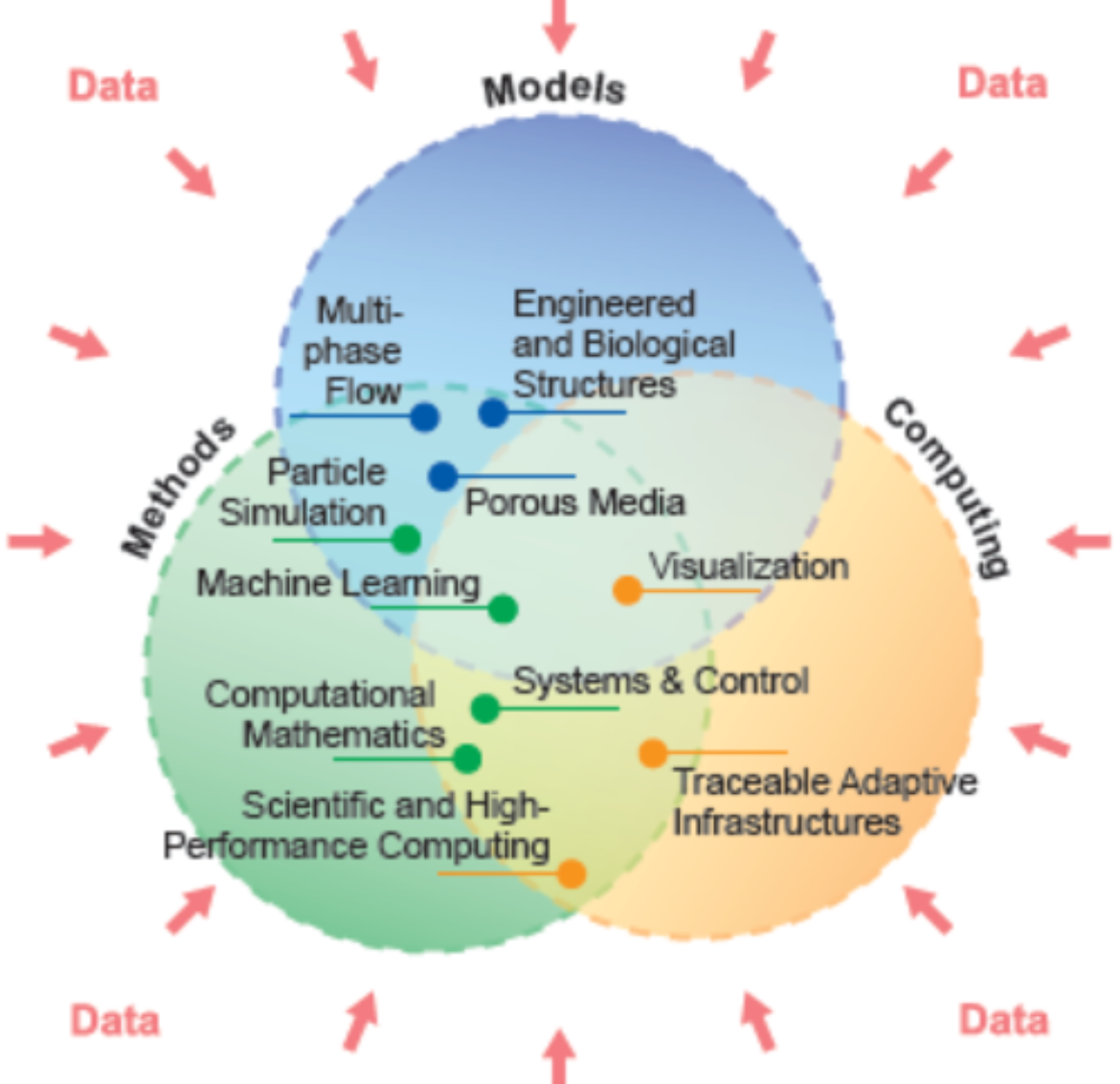Multiphase Flow is an interdisciplinary research field in which fluid dynamics and especially thermodynamics are of great importance.
Porous Media is an actively researched interdisciplinary field that involves engineering, mathematics, and natural sciences. Fundamental research projects and applications include the green gas and nuclear waste storage, contaminant transport, CO2 sequestration, mechanobiology, and engineered materials.
Engineered and Biological Structures are key components when modeling and simulating manmade and natural systems. Methods from computational mechanics, e.g. the finite element method, are key for analyzing and predicting such complex systems.
Particle Simulations have become an integral part of research in natural science and engineering.
Machine Learning has become a key discipline for empirical modeling and data-based decisionmaking in all scientific disciplines. Our team combines Machine Learning (ML) expertise in both theoretical foundations and applications.
Systems and Control is a field the University is especially strong in. It has internationally wellrespected researchers in mathematics and engineering who cover a broad field of theoretical and applied expertise.
Computational Mathematics advances the design of numerical methods for complex multi-X models towards integrating all types of data. This includes adaptivity and rigorous error estimation. Discretization approaches for stochastic models are provided, and the quantification of uncertainty in the broadest sense is addressed.
Scientific and High-Performance Computing develop innovative methods aimed at merging computation and data with adaptive algorithms that combine equation- and data-based approaches for multi-X problems. Real-time data assimilation with massive input from heterogeneous sources requires high-performance data-driven computing and novel techniques for exascale computing.
Visualization aims at visually analyzing data from both simulations and measurements.
Pervasive and Traceable Infrastructures contributes methods supporting the ubiquitous processing of simulations and their automatic adaptation by exploiting provenance information. Understandability, replicability, and reusability of simulation environments and simulation results is advanced by augmenting simulations with data through embedded sensing, visually overlaying simulation results in the real world, and migrating simulation processes at runtime.


